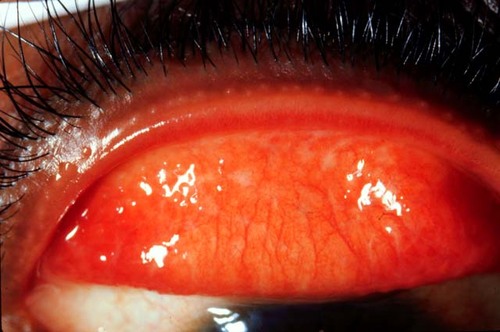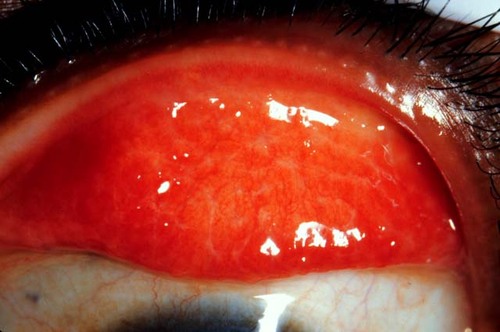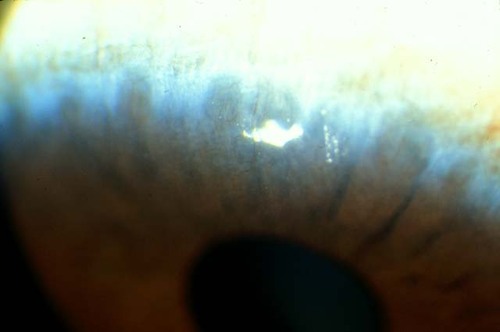Cornea/Refractive Surgery Quiz 11

Figure 1
Figures 1-3. Figures 1-2 SHOW the everted lids of a woman with chronic conjunctivitis FROM North Africa which demonstrate linear subconjunctival scarring. Figure 3 shows high powered views which reveal perilimbal depressions
Figures 1-3. Figures 1-2 SHOW the everted lids of a woman with chronic conjunctivitis FROM North Africa which demonstrate linear subconjunctival scarring. Figure 3 shows high powered views which reveal perilimbal depressions

Figure 2

Figure 3
Answer: Trachoma
2. What is the eponym for the finding in figures 1-2?
Answer: Arlt's lines
3. What is the eponym for the finding in figure 3 and what does this finding represent?
Answer: Herbert's pits. These are cicatrized perilimbal follicles.
4. How do you make the diagnosis of this condition?
Answer: In endemic areas, diagnosis is usually on clinical grounds alone. However, the diagnosis can be confirmed by Giemsa staining of conjunctival scrapings which will demonstrate intra-cytoplasmic inclusion bodies. A negative result on a Giemsa stain is not clinically useful, however, since the false negative rate can be as high as 70-90%. A more recent technique is fluorescent monoclonal antibody staining e.g. Micro-Trak, which has both high sensitivity (94%) and high specificity (88%) for chlamydia.
5. How is this condition treated?
Answer: Treatment of acute trachoma is straight forward. Systemic therapy with oral tetracycline 1.0 - 1.5 g daily or oral doxycycline100 mg bid for two weeks is usually curative. Topical antibiotics are not necessary if systemic antibiotics are given. If the patient is a child or a pregnant woman, systemic erythromycin may be substituted.